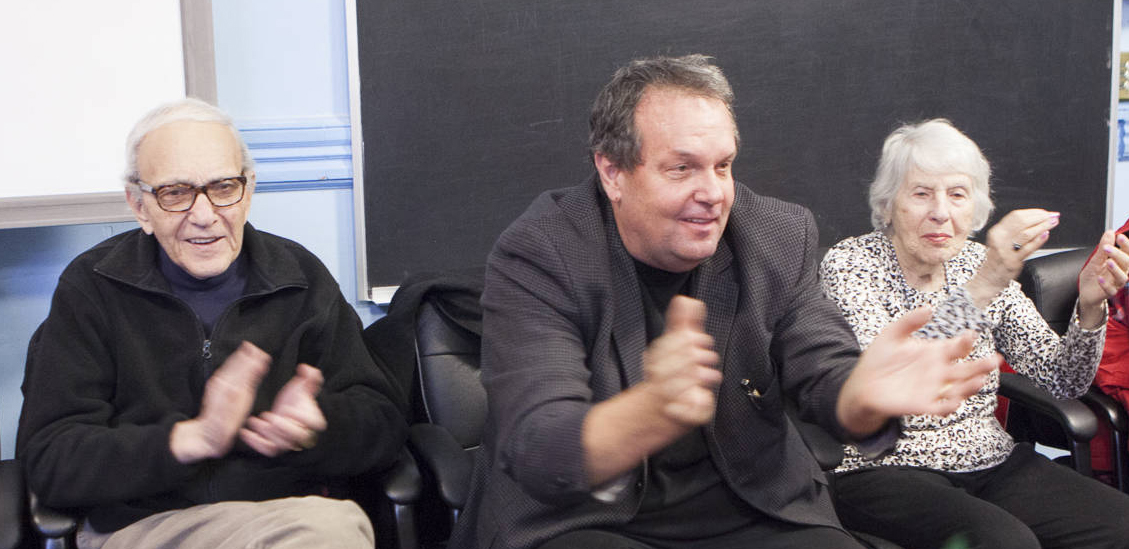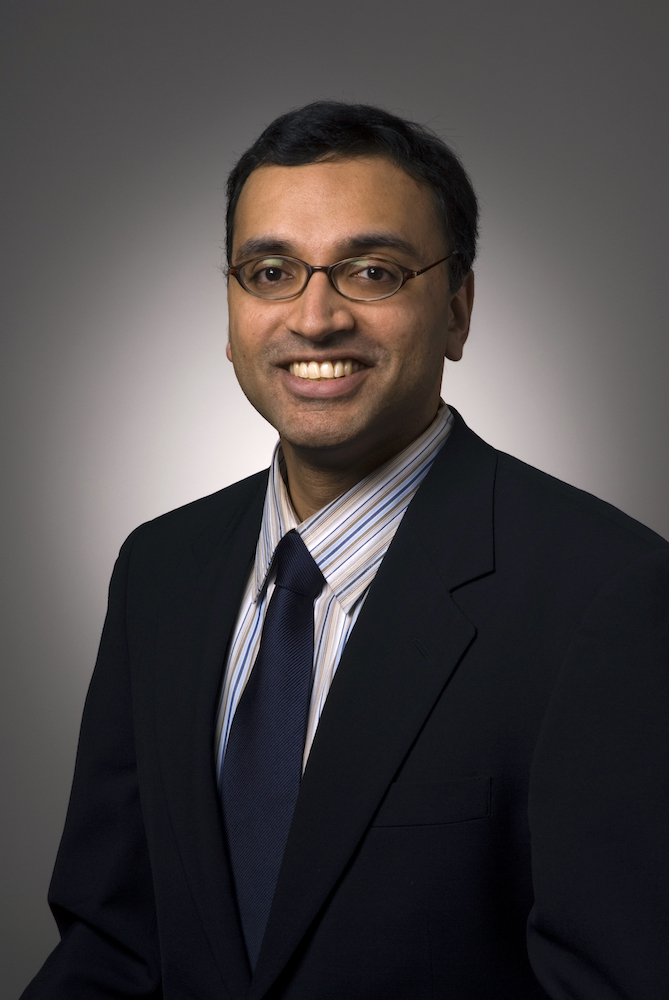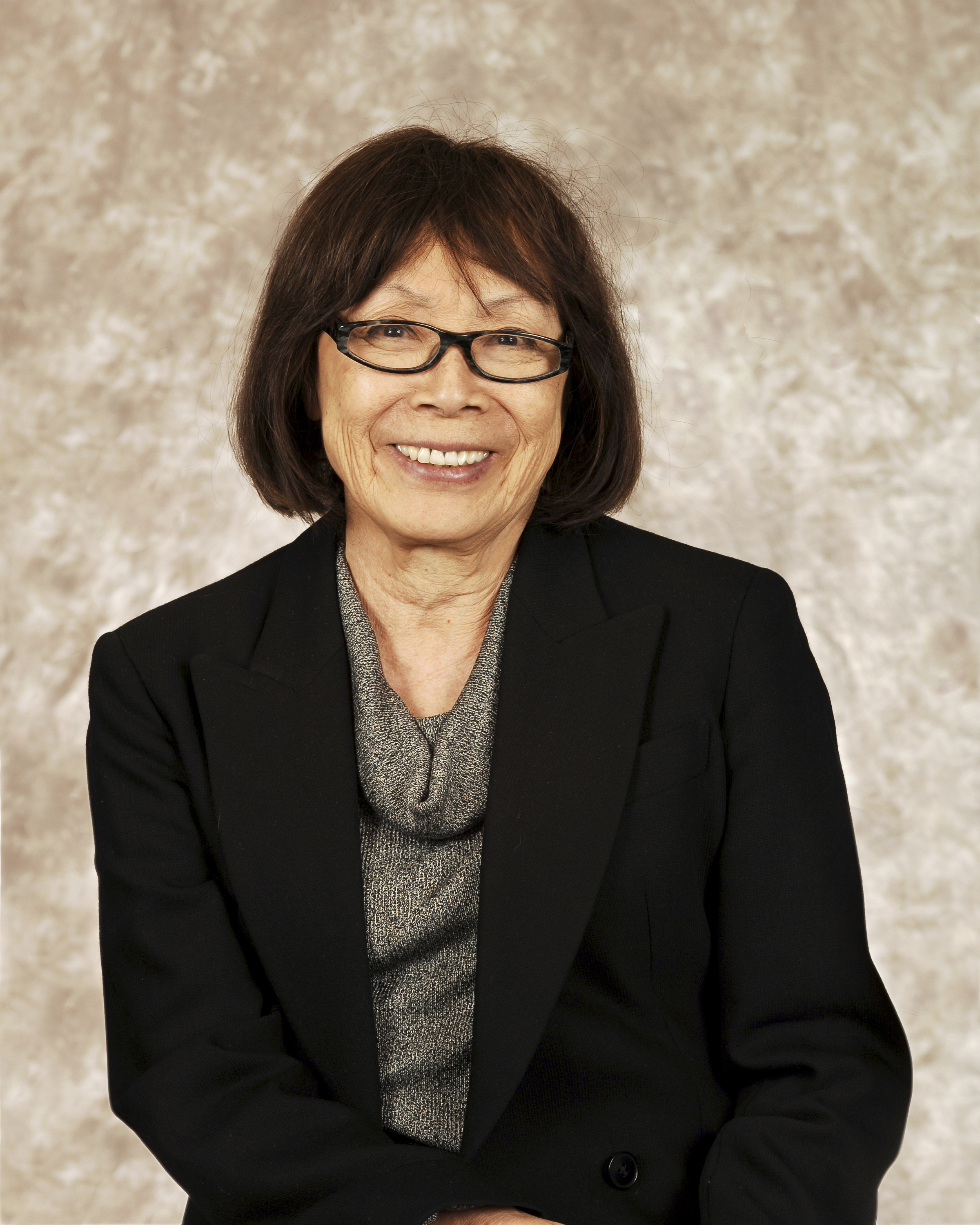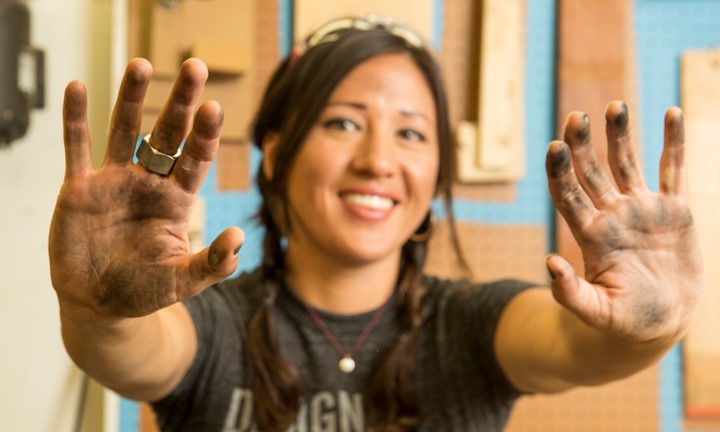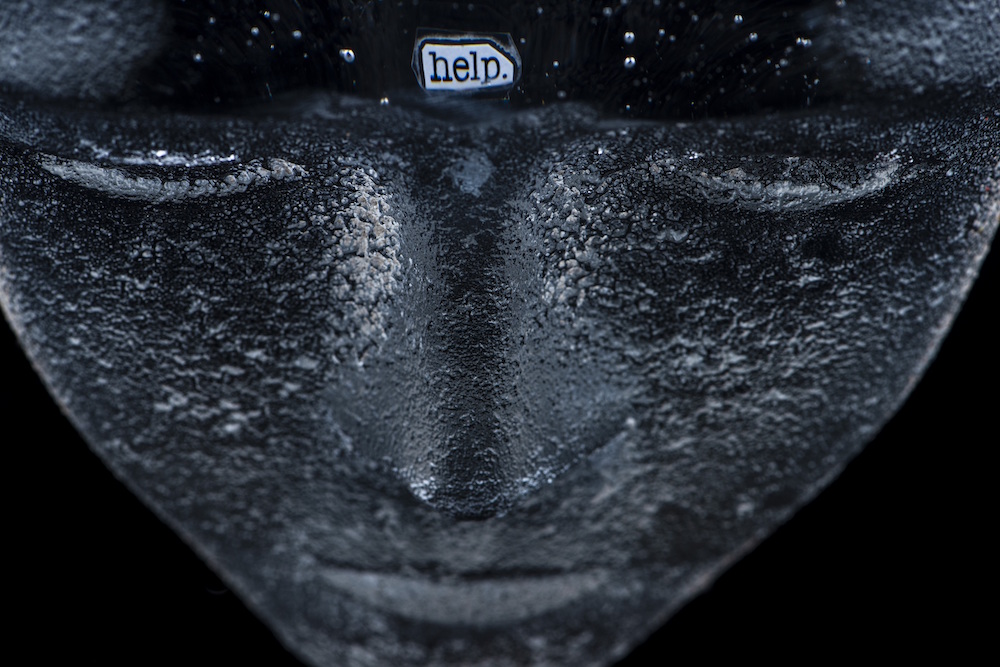Sally Wen Mao: So much history, the history of the Chinese in America, for example, I really had to go out and seek it. I had to do research independently because it was not something that was taught growing up in school…and sometimes, I feel this like very strong desire to take that information and turn it toward the lyric moments of poetry
Jo Reed: That’s poet and 2021 NEA literature fellow Sally Wen Mao. And this is Art Works, the weekly podcast from the National Endowment for the Arts. I’m Josephine Reed.
Critics are singing the praises of Sally Wen Mao’s second collection of poems, Oculus. The word Oculus is Latin for “eye.” It can also refer to the lens of a camera, and architecturally, it’s a circular window or a circular opening at the top of a dome. Sally Wen Mao uses these multiplicities of meanings, as she examines the violence of spectacle. Mao presents the many ways in which Chinese people, most particularly women, have become spectacles for American audiences in life, in death, on film and on line — objectified by a lens they don’t control. Her poems excavate this history of spectacle beginning with Afong Moy—the first Chinese woman to come to America. In a series of persona poems, she takes Anna May Wong from early Hollywood to the present day. And Mao interrogates the culpability of present technology as well-- from an online suicide in 2014 to a murder that was a front page sensation and horror in 2012. Through them all, Sally Wen Mao makes clear the price these people paid and continue to pay as they hold the weight of our gaze, their visages a spectacle for others to consume...both visible and unknown. And the poet also intervenes—reanimating and resurrecting these women who have been flattened by history’s gaps and the narrowness of our stares. Sally Wen Mao spoke with me about Oculus earlier this week—as it happens-- in the wake of the murders in Atlanta of six Asian-American women.
Sally Wen Mao: Yes. So, in Oculus I kind of attempt to create a through line between the history of Chinese women, in particular, in America and the present and the ways in which the narratives have been shaped about those women and I began with the first woman, the first Chinese woman to ever come to America, Afong Moy, which was in 1834 and then I continue with Anna May Wong, a Hollywood star, which she lived in the 20th Century, for the most part, and yeah, and then I trace it to the present, where, again, these conversations have really become fraught in the past week. So, that is something that I was really intentional about when I was writing and drafting “Oculus.”
Jo Reed: Let’s begin with a poem from Oculus. And I think the poem “Occidentalism,” is a great way to frame this conversation.
Sally Wen Mao: Yes, great. Yes. I will read that poem,
“Occidentalism.”
A man celebrates erstwhile conquests,
his book locked in a silo, still in print.
I scribble, make Sharpie lines, deface
its text like it defaces me. Outside, grain
fields whisper. Marble lions are silent
yet silver-tongued, with excellent teeth.
In this life I have worshipped so many lies.
Then I workshop them, make them better.
An East India Company, an opium trade,
a war, a treaty, a concession, an occupation,
a man parting the veil covering a woman’s
face, his nails prying her lips open. I love
the fragility of a porcelain bowl. How easy
it is, to shatter chinoiserie, like the Han
dynasty urn Ai Weiwei dropped in 1995.
If only recovering the silenced history
is as simple as smashing its container: book,
bowl, celadon spoon. Such objects cross
borders the way our bodies never could.
Instead, we’re left with history, its blonde
dust. That bowl is unbreakable. All its ghosts
still shudder through us like small breaths.
The tome of hegemony lives on, circulates
in our libraries, in our bloodstreams. One day,
a girl like me may come across it on a shelf,
pick it up, read about all the ways her body
is a thing. And I won’t be there to protect
her, to cross the text out and say: go ahead—
rewrite this.
Jo Reed: That is just such a beautiful poem. There’s so much that I love about this and the lines that really jump out at me-- “In this life, I’ve worshipped so many lies and then I workshop them and make them better,” and clearly, that’s what this poem is doing, trying to complicate a narrative that’s often so simplistic.
Sally Wen Mao: Yes. I mean, the origin of this poem came from when this happened to me, when I came across a book at the library that was-- it was a book kind of describing the sexual conquest of Asia by Europeans and it was a book that the tone of it was quite dehumanizing throughout, even though it kind of presented itself as a history book, it was very-- yeah, it really dehumanized and fetishized Asian women that it was describing throughout the book and it defined the East was anywhere from North Africa to Southeast Asia. So, it just-- I find that these narratives are still being perpetuated throughout my life and they’re so harmful, the impact. So, I wrote this poem because I was really angry. I just remember myself. I was 22 and I just felt powerless because, again, the book that I found, it had just been published that year. It was reviewed in The New York Times. It was enjoying like this moment in the spotlight and I just felt “Wow, this type of book is still acceptable,” and yes, I can imagine that happening to any Asian woman and it’s not just that one book, but it’s so many books across the history of the world and not just books either, but like we mentioned films, narratives, all the media that we consume.
Jo Reed: Indeed and you do go back in history. Tell us about Afong Moy.
Sally Wen Mao: Yes. So, she was the first Chinese woman to ever come to the United States and she came because a couple of brothers or actually cousins, maybe, merchants wanted to sell this new line of products from Canton or Guangdong and they wanted to sell vases, scrolls, oriental objects, and they thought that the best marketing gimmick would be to bring a live Chinese woman to be displayed among these objects from China and so, they found this 19-year-old girl and sent her across the ocean and so, she landed in New York City and she was placed in this saloon, of sorts, and they put all these objects around her and they charged admission so that people can go and just kind of go and look at her and see her as kind of an object, right? This show, it became a sensation and she ended up going on a tour across the US and she ended up-- she met the President at the time, Andrew Jackson, and it was quite a journey and yet, every record that exists of her were newspapers, usually, and all of the accounts of her are written from the perspective of people who consumed her or paid to see her or just saw her as an oriental object, essentially.
Jo Reed: So, you imagined a voice for her and you gave her an imagined perception.
Sally Wen Mao: Yes. I mean, the thing about it is that her perception existed, but it was just ignored.
Jo Reed: Exactly.
Sally Wen Mao: And I had to imagine how strange it must have been for her. All of these people were calling her strange, but like coming from her perspective, like America was strange. America was like extremely bizarre in all of these ways that those newspaper accounts never ever considered.
Jo Reed: Well, there was a lot of emphasis on her bound feet, but what you did in that poem was instead of her being the object of these people’s gaze, you turned it around and had her gazing at the spectators and wondering at the deformity of women’s corsets.
Sally Wen Mao: Yes. Really, it is the first comparison is the bound feet are a way of controlling women’s bodies, but that also existed in the west in the form of corsets. So, in a way, the narratives were spinning this story that yes, China is extremely backwards, even Andrew Jackson called it like a barbaric practice. But like all of these things were happening in other forms in the United States.
Jo Reed: Exactly, and the context, of course, of somebody who’s a slave owner calling bound feet barbaric.
Sally Wen Mao: Exactly. Exactly, and somebody who displaced so much of the Native population at the time. 1834, like as Afong Moy was traveling through the United States, she was sometimes on the same path as the Native Americans who were being displaced at the time and so, all of those histories, I think, are intertwined.
Jo Reed: Well, you wrote 11 persona poems in the voice of Anna May Wong, who we know more about, I think it’s safe to say, than Afong Moy, but who despite her enormous talent was still flattened by stereotypes on the screen. You mentioned her when we first began speaking, but could you just tell us a little bit more about her?
Sally Wen Mao: Yeah. So, she was a very prominent Hollywood actress and she was born in Los Angeles and she was the daughter of a laundromat owner and she really rose through Hollywood like from a very young age. I think her first starring role, she was still a teenager and yes, she had to face a lot of racial stereotypes in the kinds of roles that she would be offered, like Fu-Manchu’s daughter and she did really critique this, like in her lifetime. She was very vocal about the realities for Asian actors and actresses.
Jo Reed: Can we hear “Anna May Wong on Silent Films?”
Sally Wen Mao: Yes.
“Anna May Wong on Silent Films”
It is natural to live in an era
when no one uttered—
and silence was glamour
so I could cast one glance westward
and you’d know what I was
going to kill. Murder in my gaze,
treachery in my movements:
if I bared the grooves
in my spine, made my lust known,
the reel would remind me
that someone with my face
could never be loved.
How did you expect my characters
to react? In so many shoots,
I was brandishing a dagger.
The narrative was enchanting
enough to make me believe
I, too, could live in a white
palace, smell the odorless gardens,
relieve myself on their white
petals. To be a star in Sun City—
to be first lady on the celluloid
screen—I had to marry
my own cinematic death.
I never wept audibly—I saw my
sisters in the sawmills,
reminded myself of my good luck.
Even the muzzle over my mouth
could not kill me, though I
never slept soundly through the silence.
Jo Reed: That’s “Anna May Wong on Silent Films.” Tell me what goes into taking on the voice, especially over the course of 11 poems, of someone who actually lived.
Sally Wen Mao: Yes. I did research. Obviously, I read a couple of her biographies. She did have a very vocal presence. She had-- for example, she wrote newspaper columns for the New York Herald Tribune and she did-- so, one contrast between Anna May Wong and Afong Moy is that Anna May Wong did have first-person accounts and records and I guess the reason I chose her as a persona is that in a way, Anna May Wong’s career and her job was to kind of take on the lives of other people and as a celebrity and as an actress, she ended up bearing the burden of representation and because her face was visible at the time, that ended up-- it ended up standing in for so many people and she was such a token, right? Still is, to this day. She’s very much a token and very much has to reckon with her role as a stand-in for, again, like all of these invisible lives, invisible faces.
Jo Reed: I’ve always been in love with her voice because it’s so authoritative. And because of miscegenation laws, her roles were limited. Is that correct?
Sally Wen Mao: Yeah, the anti-miscegenation laws at the time meant that she couldn’t really be a leading lady, even-- and honestly, a lot of Asian roles went to white actors and those white actors, even if they were playing Asian people in yellow face, like there was still the anti-miscegenation laws applied in those cases.
Jo Reed: She also said “All Chinese in America are homesick,” which I found heartbreaking.
Sally Wen Mao: Yes, and something I think that is specific to her is that she was born and raised in Los Angeles. So, she didn’t actually go to China or she never even stepped foot in China until her early 30s. So, imagine, she had like this long and illustrious career as an actress trying to represent this people that really, she didn’t really know China that well. Like, she didn’t know China firsthand. She only knew China through this diasporic lens.
Jo Reed: In your poems, in your persona poems in the voice of Anna May Wong, you really give her stories. She has a romance with Bruce Lee. She’s making cameos in “Romeo Must Die” and “Kill Bill,” among others and it’s serious, but it’s also playful.
Sally Wen Mao: Oh, yes. I really wanted the persona poems to do something beyond just capturing her life. I feel like if people wanted to know about her life, they could read the multiple biographies that are out there about her. For me, I felt that the poem created a space where I can experiment with a thought experiment, just what it would it be like if she could travel into the future. She traveled so much in her life. If she traveled into the future, what would she think? What would she think of Bruce Lee? What would she think of all these films that came out after her death. So, that was something I really wanted to tap into.
Jo Reed: I’m curious about the way you tackle history in your work and the way you imagine these moments that have been lost in history.
Sally Wen Mao: Yes. So much history, the history of the Chinese in America, for example, I really had to go out and seek it. I had to do research independently because it was not something that was taught growing up in school. I remember, for example, when I was 12, I was removed from my class because there was a citywide project that was about kind of preserving the history of Chinese in California and so, I was pulled out of the class along with my friend, who is also the only other Chinese girl and we learned about Chinese immigration into California. They even took us on a field trip to Angel Island, which was an immigration station from the early 20th Century that housed a lot of-- that detained a lot of Chinese immigrants because it was an immigration station was built, essentially, to enforce the Chinese Exclusion Act and I just remember even as a 12-year-old thinking like “This is crazy. I didn’t know this history. Now I’m learning it. Why am I the only one learning it? Why isn’t it taught in my class? Why aren’t the rest of my classmates learning this history?” And the history of Chinese immigrants to California, it’s such a huge part of California history. Now, as an adult, I have learned that I have to seek out that information and sometimes, I feel this like very strong desire to take that information and turn it toward the lyric moments of poetry because one thing that struck me when I visited Angel Island so many years ago was that these detained immigrants, they were writing poetry on the wall. On the walls of the detention center, there were poems that were carved and the immigrants who were detained and desperate and just miserable were turning to poetry and I think that there’s something really significant about that.
Jo Reed: I agree. Throughout your poems, you really push at that boundary that can be very fluid between spectacle and image.
Sally Wen Mao: Yes. I mean, so much of, again, if we’re talking about like Chinese American femininity is bound up in spectacle, right? Even with Afong Moy, she was a spectacle. That’s essentially what she was. She was an object to be looked at and consumed. Same with Anna May Wong and in my book, I also think about social media and technology today and how in a way, even now, when we can kind of like upload images of ourselves and when we can kind of curate like an Instagram or go on a webcam, things like that, even now, I still don’t think that women have total control over their images and that was something that really fascinated me and not just women, obviously. I have a poem in the book that looked at a particular spectacle that occurred almost a decade ago, of this man who was pushed into the subway tracks.
Jo Reed: "No Resolution."
Sally Wen Mao: Yes.
Jo Reed: Yeah, I was going to ask you to read that later, but do you want to read it now?
Sally Wen Mao: Oh, yes. Yes, so, the story about this was that his-- somebody took a picture of him on the subway tracks, and then it ended up becoming the cover of the New York Post. And-- like there's just something so I guess like traumatic about seeing that, I remembered. And this-- and a year later, in 2013, I ended up, by chance, meeting the man's daughter. And we just had this exchange, and this poem is kind of about that. So,
"No Resolution." And the epigraph says,
"In December, 2012, a father from Queens, Ki Suk Han, was pushed into the train tracks of an oncoming Q train. This poem is for his daughter, Ashley Han.
The cover of the magazine. I throw it open,
I throw it out. This man announces
the headline. THIS MAN IS ABOUT TO—
Blood broadcasts the story. noise rakes
the story, and pummels it to the ground
until there's nothing left. No story. No Man.
No wife and daughter, no life in Queens.
His daughter doesn't speak, she closes
her eyes, and the lids sear the whites beneath.
At the press conference, she hides her hands
inside her hoodie. All the cameras, they point,
they shoot-- she reels, she shatters.
A year later, I will meet her. We will walk down West 4th,
MacDougal. Under the arches, on a crisp
October day, we will eat crepes in the East Village,
watch a man play piano in the square.
She will talk about her father-- the story
of all of our lives-- how she didn't have the chance
to connect with him fully, and then suddenly—
it was the story of none of our lives—
and she was 21, an only child, with her father's
fate on a magazine cover, piled in grocery
stores across America, in low-res, hi-res,
the pixels blurred like smudges.
For now, it is December. The shadows on the platforms
elongate. I have not yet met her. I turn off the television,
afraid of its heft, its volume, its relationship to gravity.
Lately, I can't go underground without shielding
my body with my hands. The train winds
and goes. The stories about our lives do not have faces."
Jo Reed: That's "No Resolution." I think it's a devastating poem. This mammoth, personal loss, turned into a blip in the news. I've seen your book described as looking at the violence of the spectacle, and I think this poem certainly does that.
Sally Wen Mao: Yes. I guess, I mean, in recent news, you see these videos of elderly Asian folks being brutalized. And I really think back to that moment in December 2012, when we all learned about this incident, where this man was just pushed into the train tracks. And one of the huge, you know, outcries, related to that, was the fact that the New York Post just like decided to run that cover, and it was so lurid, and it was so dehumanizing, to use like an earlier word. And again, like you can't see his face. Like he's looking at the train. And, I remembered the pain that a lot of people felt, in the Asian American communities, just this feeling that, if we die, then our deaths might turn, or be made into a spectacle, might be exploited in that way. So, yeah. I don't know if I can properly talk about it.
Jo Reed: It's hard, this week, too. Do you fear that same story for the women who were murdered in Atlanta?
Sally Wen Mao: Well, one thing that I noticed, as the news was unfolding is the central focus of this shooting, of this massacre, is this conversation about what to call it, right? Is it a hate crime? Is it not? And this policeman said that the shooter had a bad day. That's the theme heard around the world, right? The shooter had a bad day. He had a sex addiction, you know, it was not motivated by race. And then, I remembered like somebody from this shooter's life came out and said, oh, he loved Asian culture. He was not racist. But like one thing that I realized is that a lot of white people-- a lot of people-- you know, a lot of people aren't aware that that kind of fixation on Asia, that kind of like obsession with Asia, it can be racist. Because where does that fixation come from? It's a long, you know, brutal history of subjugation, and the intersection of fetishization, of a hyper-sexual Asian woman, and that type of sexualization is highly racialized, it's highly racist.
Jo Reed: And tied in, with that very particular stereotype, I think, that's highly sexualized, is also passivity.
Sally Wen Mao: Mm-hm, yes. And, I mean, like Asian women, I think the American conception of Asian women has to do with imperialism, it has to do with occupation, and also, you know, these long histories of exclusion and brutalization. And one of the things I've found in my research, just for my poetry, is that the first waves of immigrants, women immigrants from China, were sex slaves. They arrived in San Francisco, and as soon as they arrived, they were carted off into-- to a barracoon, where they were stripped naked, and inspected, and then they were sold to the highest bidder. Not something that I learned in school. Not something that, I think, is public knowledge. But it's deeply wrapped in-- you know, in this country's history, and its perceptions of Asian women.
Jo Reed: Your poems confront those perceptions. You draw on visual culture a lot in your poems. I’m curious about your own relationship with visual culture?
Sally Wen Mao: Actually, growing up, I loved drawing. I loved visual art. And I was always drawing, I was always painting, and I think it just kind of translated into my writing.
Jo Reed: Where did you grow up?
Sally Wen Mao: I grew up in the San Francisco Bay Area, but I was born in Wuhan, China, and my parents moved to the US when I was five. We lived in Boston for four years, and then, we moved to the Bay Area, when I was around nine years old. And yes, I remember those times. I really looked to drawing and writing as a solace for feeling-- you know, feeling different. Feeling alone. So, all of that, I think, is-- are things I want to think about in my work.
Jo Reed: And how did you land on poetry, rather than visual arts? How did you make that turn?
Sally Wen Mao: Well, it's kind of funny, because I think, in middle school-- this is probably a very typical story, but my mother told me that I couldn't be a visual artist, because artists don't make any money. And up until--
Jo Reed: Oh, and poets strike it rich all the time.
Sally Wen Mao: Yes. Well, you know, what's funny is because-- like up until middle school, I just kind of assumed that I would become a visual artist, and that was just what I was going to do. And then my mom was like, oh, yeah, artists don't make any money. And then, I switched to writing. I started writing poetry, I started writing fiction. And by the time I reached high school, you know, this is what I wanted to do. I wanted to write poetry and fiction, and I wanted to become a writer. And this time, you know, my mom would tell me, no, that doesn't make money, and this time, I wasn't going to listen to her. I was a teenager, so. So, yes, I just kind of stuck with that.
Jo Reed: You dedicated the book-- and it was very, very moving to me. You said that you wrote this book for women of color.
Sally Wen Mao: Yeah. And I guess, you know, I'm not making an attempt to speak for women of color, or even for Asian women, because, again, within Asian America, there are so many disparate histories. And like to me, I was really fascinated, in Chinese history-- the history of Chinese in America. But I do think of this book being for women of color in general, because of the multiple valences of this particular type of oppression, that might manifest in different ways. In very different, diverse ways, like across the spectrum. And, you know-- and I think that there's something powerful about acknowledging that, and acknowledging that we are a part of a larger struggle, you know, against this intersection of misogyny and racism. And other valences, too, like homophobia, like transphobia, like classism, and-- you know, and so many types of exploitation. Gosh. But, by coming together, I feel-- I really believe that something can be birthed.
Jo Reed: This book, Oculus, has been out for a year. Have you heard from Asian Americans, Asian American women about it? Have you gotten feedback?
Sally Wen Mao: Yes, I have. I've gotten a lot of feedback, and to really means everything to me, to hear from them. They are my audience, right? They're the people that I want this book to reach. And they're often the people who never come across some of these themes in their reading. So, yeah. I mean, I have heard from a lot of-- particularly-- like in particular young women, young Asian women. And again, to me, that is my audience. That is who I want to be in conversation with, that is who I want to affirm and validate.
Jo Reed: I'd like to end with the poem "Resurrection," the poem you end your book with. Do you want to say a couple of words about it, and then read?
Sally Wen Mao: So, this poem came out of this experience when I came to New York in 2014, I was working on the poems of "Oculus." And so, I was deeply thinking about Anna May Wong. And I noticed that there was a billboard that was being shown all around the city, that had her face on it. And it was an advertisement for like a new exhibition at the New York Historical Society. And it was about Chinese Americans, and the history of Chinese immigration. And the thing that I really noticed is how, even, you know, to the present-day, Anna May Wong has that burden representing this entire, huge, like diverse population of people. Even in 2014, like her face is standing in for millions of immigrants, right? And I think the thing that really got to me is that, like, her name was like kind of in this small text, much smaller than, you know, Chinese American. And so, it made me wonder if the people around me, on the subway, or like in the stations, like if they recognized her face. Because I recognized her face, it was so familiar to me, but it might not be familiar to other people. They might not know who she is. And they might see her face on the signs, and think, okay, Chinese. Chinese, right?
So, this poem is called "Resurrection
In the autumn I moved to New York,
I recognized her face all over the subway
stations—pearls around her throat, she poses
for her immigration papers. In 1924, the only
Americans required to carry identity cards
were ethnically Chinese—the first photo IDs,
red targets on the head of every man, woman,
child, infant, movie star. Like pallbearers,
they lined up to get their pictures taken: full-face
view, direct camera gaze, no smiles, ears showing,
in silver gelatin. A rogue’s gallery of Chinese
exclusion. The subway poster doesn’t name
her—though it does mention her ethnicity,
and the name of the New-York Historical
Society exhibition: Exclusion/Inclusion.
Soon, when I felt alone in this city, her face
would peer at me from behind seats, turnstiles,
heads, and headphones, and I swear she wore
a smile only I could see. Sometimes my face
aligned with hers, and we would rush past
the bewildered lives before us—hers, gone
the year my mother was born, and mine,
a belt of ghosts trailing after my scent.
In the same aboveground train, in the same
city where slain umbrellas travel across
the Hudson River, we live and live.
I’ve left my landline so ghosts can’t dial me
at midnight with the hunger of hunters
anymore. I’m so hungry I gnaw at light.
It tunnels from the shadows, an exhausting
hope. I know this hunger tormented her too.
It haunted her through her years in L.A., Paris,
and New York, the parties she went to, people
she met—Paul Robeson, Zora Neale Hurston,
Langston Hughes, Gertrude Stein. It haunts
her expression still, on the 6 train, Grand
Central station, an echo chamber behind
her eyes. But dear universe: if I can recognize
her face under this tunnel of endless shadows
against the luminance of all that is extinct
and oncoming, then I am not a stranger here.
Jo Reed: And I think that is a very good place to end it. Thank you so much, Sally, I really appreciate you giving me your time. And thank you for this book of wonderful poetry.
Sally Wen Mao: Thank you so much for having me, it was a pleasure.
Jo Reed: That was Sally Wen Mao—We were talking about her collection of poetry, Oculus. You’ve been listening to Art Works, produced at the National Endowment for the Arts. I’m Josephine Reed, stay safe and thanks for listening.
###
